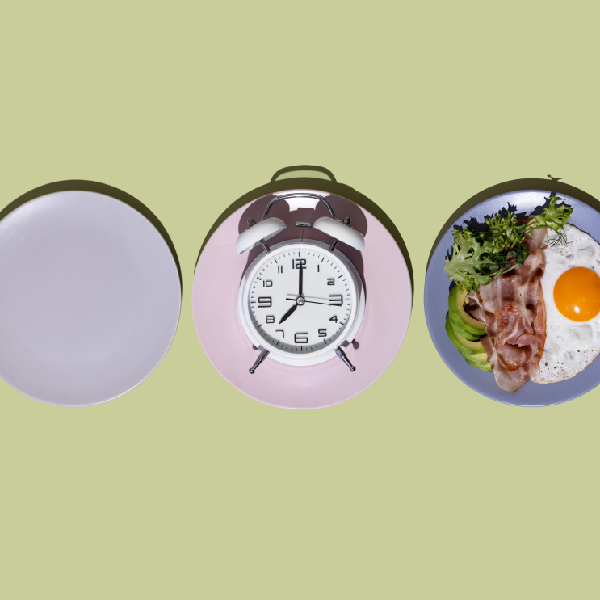What do Amaranth, Millet, Rye, and Kamut have in common? They are all types of whole grains, the same as whole wheat, brown or wild rice, and even popcorn. The US Dietary Guidelines (1) and the Clinical Guidelines for Diabetes Care (2), both point out the need to increase your intake of whole grains with the goal of reaching a level of 48 grams per day.
And, in the Choose MyPlate Food Guide it is recommended that we make at least ½ your grains whole grain. (3) But what exactly are whole grains and how did they come to set the level at 48 grams? Are they different from dietary fiber? How many types of whole grains are there and do they all provide the same nutrients?
All of these questions I will explore in this article to increase awareness of the importance of whole grains and to encourage you to participate in the “Choose a New Whole Grains” Challenge to try one new whole grain item and share your recipe. This challenge is patterned after the Whole Grains Council’s Whole Grains Challenge program that ran from 2007 to 2012, which helped people discover the many ways to incorporate whole grains into their diets.(4)
Recently, I was challenged to reveal just how many whole grains I consumed? To my surprise, I could find only about four whole grains that I ate on a regular basis – whole wheat, brown rice, corn (including popcorn), and oatmeal. A fifth could be added to the list if I include the occasional quinoa recipe (pronounced “keen wah” and pictured here), which is a favorite of my grandson, who has severe allergies and cannot eat many of the other forms of grains. I started to think about the many people living with diabetes and wondered how many do they get in and if challenged to try a new grain, how many could I get to respond back to share their recipe idea with others? So, are you ready to take the “Choose a New Whole Grain” Challenge? Read on as I share some facts on why this is so important. Let’s begin with:
What are Whole Grains and Why Should We Eat Them?
There are more than 20 varieties of whole grains that are consumed worldwide. Whole grains include plant grains whether whole, broken, or milled, which contains all segments or layers of the entire grain kernel: the bran, the germ, the aleurone, and the endosperm. (4,5) The aleurone, located right next to the bran layer, is the most metabolically active part of the grain which aids in cell growth of new grain plants if cultivated and is rich in nutrients, vitamins and antioxidants. Dietary fiber refers primarily to the bran layer of the grain, although soluble fiber can be found in other parts as well. In 2013, to look at the impact of whole grain consumption on the progression of type 2 diabetes, coronary heart disease (CHD), and high blood pressure (HBP), the international research team of Lillioja, Neal, Tapsell, and Jacobs (5) examined eleven prospective United States interventions addressing chronic health conditions and correlated the rates of disease with the level of intake of whole grains (g/day). Striking effects of whole grain intake were seen in a variety of studies:
- Consuming 20 g/day more in whole grain resulted in a 26% drop in CHD incidence (95% CI 19–33%), and a 30 g/day more in whole grain consumption showed to a 36% drop in CHD incidence (95% CI 27–45%);
- A 40 g increase in whole grain consumption dropped the incidence of HBP by 5.4 cases/1,000 person person-years (95% CI 3.8–6.9), a 20% (95% CI 14–26%) drop in incidence of HBP;
- Sun et al. estimated that exchanging 50 g per day of cooked white rice with 50 g of whole grains (dry weight) may reduce the risk of type 2 by over 35%;
- In the Physicians’ Health Study, consuming whole grain breakfast cereal at least once per day daily, could result in almost a 50% reduction in type 2 incidence and a 20% reduction in HBP;
- For a type 2 incidence of 3.87 (the mean incidence seen in five studies), this equates to a 30% reduction in diabetes incidence with a 30 g/day increase in whole grain consumed (95% confidence interval (CI) 22–39%), and a 40% drop (95% CI 29–52%) for a 40 g daily increase; and
- Elevating whole grain intake to 40 g, and ideally 50 g daily (about a bowl of whole grain breakfast cereal daily) could have major public health benefits. (5)
These studies show significant health benefits in increasing whole grain on a daily basis. This is a concern given that 80% of the U.S. has low whole grain intakes. Below are some grains that I challenge you to learn how to cook and have more often:
| Amaranth— A lively, peppery taste and is higher in protein (16%) than most other grains. It is popular in cereals, breads, muffins, crackers and pancakes; |
| Quinoa—A tiny, round grain, often light-colored but also found in red, purple and black. It can be put in soups, salads, or eaten plain. The protein in quinoa is complete protein, similar to meats; |
| Barley—Has a very tough hull that is difficult to remove. Look for hulled or pearled-barley. The fiber in barley lowers cholesterol more than oat fiber. Use in soups, salads, or as a side dish; |
| Kamut— Kamut is an ancient Egyptian word for wheat. Today, this rich, buttery-tasting wheat are grown on organic farms and made into over 450 whole-grain products around the world; |
| Rye—Is found in bread and crackers products but the cooked whole grain can be added to soup and salads. It has a low glycemic index and high fiber content which promotes a rapid feeling of fullness, making it ideal for diabetics or people wanting to lose weight; |
| Millet— Is mild flavored and often mixed with other grains in bread or muffins, or it’s toasted before cooking, to bring out its delicate flavor. Its tiny grain can be white, gray, yellow or red. (4) |
The Word on Gluten and Whole Grains…
Gluten is the protein component found in grass-family grains, particularly, in all wheat varieties, rye, and barley. (4) Kamut, Bulgur, Spelt, Emmer, Faro, Einkorn, Cracked Wheat, and Wheatberries are also varieties of wheat containing gluten. Gluten is what gives noodles their rubbery flexibility and bread batter its elastic, gummy texture, which helps it to raise and hold its shape. However, there are plenty of other whole grains that do not contain gluten. Gluten-free grains include: Amaranth, Brown Rice, Corn, including corn meal and popcorn, Millet, Oats, including oatmeal, Quinoa, Sorghum (also called milo), Teff, Triticale, and Wild Rice. (4)
So whether gluten sensitive or not, with a little planning, everyone can try the “Choose a New Whole Grain” Challenge to increase their whole grain intake. And, please post your recipe in the comment section for others to try. For recipe ideas go to www.wholegrainscouncil.org.
References:
1.) Office of Disease Prevention and Health Promotion (2015). Dietary Guidelines. Retrieved from here.
2.) American Diabetes Association (2015). Standards of medical care in diabetes—2015. Diabetes Care 38(Suppl. 1):S1–S2 | DOI: 10.2337/dc15-S001 Retrieved from here.
3.) USDA & USHHS (2014). Choose MyPlate Food Guide. Washington D.C.: Food and Nutrition Service. The information was retrieved from here.
4.) Oldways Health Through Heritage Resources (2015). Whole Grain Council’s Educational Resources and Recipes. Retrieved from here.
5.) Lillioja, S., Neal, A. L., Tapsell, L., & Jacobs, D. J. (2013). Whole grains, type 2 diabetes, coronary heart disease, and hypertension: links to the aleurone preferred over indigestible fiber. Biofactors (Oxford, England), 39(3), 242-258. doi:10.1002/biof.1077




